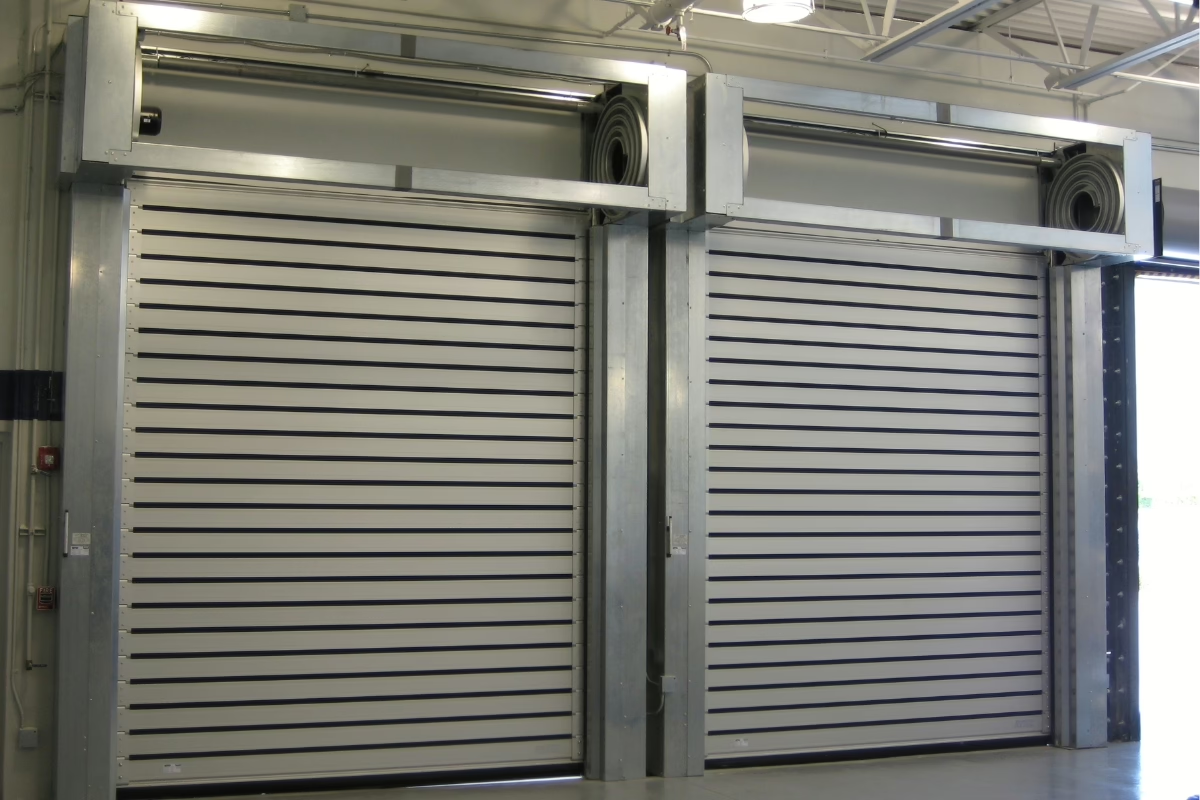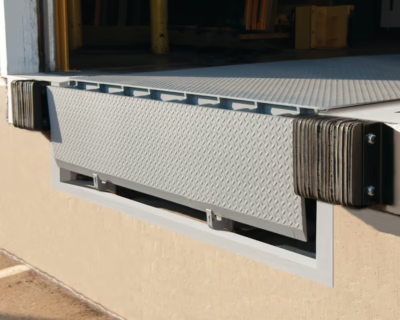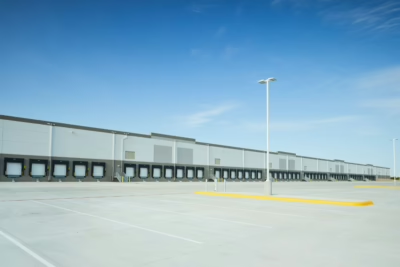In high-volume commercial environments, even small delays can ripple into significant productivity losses. Whether you’re managing a distribution center, cold storage warehouse, or manufacturing facility, your doors play a critical role in how efficiently people, equipment, and products move through your building.
Traditional sectional or rolling doors are reliable but often slow, noisy, and prone to wear under frequent use. For busy facilities where time and environmental control are top priorities, high-speed doors offer a smarter, more effective solution.
This article explores how high-speed doors improve operational flow, energy efficiency, safety, and long-term ROI – and why more facilities are investing in them as a strategic upgrade.
Enhanced Productivity and Workflow Efficiency
One of the most immediate benefits of high-speed doors is faster cycle time. Standard commercial doors often take 10 to 15 seconds to open and close – or longer, depending on size and age. Multiply that by hundreds of daily openings, and you’re looking at hours of lost operational time each week.
High-speed doors open in a fraction of the time, often 60 inches per second or more, minimizing delays and allowing forklifts, carts, and personnel to move more freely between work zones.
At scale, this speed results in:
- Faster vehicle turnaround at loading docks
- Reduced backups during shift changes
- More efficient temperature-controlled product transfer
- Improved on-time performance across shipping and production
For companies that prioritize throughput, a high-speed door can quickly become one of the highest-ROI investments in the facility.
Better Climate Control and Energy Savings
When overhead doors stay open for long periods, temperature-controlled environments suffer. HVAC systems have to work harder, product stability is jeopardized, and energy bills increase.
High-speed doors help reduce air infiltration by opening and closing rapidly, minimizing the window for conditioned air to escape or for outside air to enter. Many models also offer insulated curtain materials, tight perimeter sealing, and brush gaskets to maintain temperature barriers.
This makes them ideal for:
- Cold storage warehouses
- Clean manufacturing zones
- Food and beverage facilities
- Multi-zone temperature environments
Over time, improved climate control doesn’t just protect product integrity – it reduces utility costs and extends the life of HVAC systems as well.
Safer Environments for People and Equipment
Safety is a top concern in any busy facility, and doors are one of the most common collision points. Traditional doors may lack the responsiveness and visibility to protect operators, especially when forklift traffic is involved.
High-speed doors are specifically engineered to reduce safety risks:
- Soft-bottom edges reduce injury in the event of accidental impact
- Photo-eye sensors and motion detectors stop the door from closing when someone or something is in the path
- Many doors offer breakaway designs that automatically reset after a hit
- Optional transparent vision panels improve visibility on both sides of the door
These features reduce workplace injuries, minimize door-related downtime, and help create a more efficient flow of movement across zones.
Lower Maintenance and Long-Term Durability
While high-speed doors may cost more upfront than traditional sectional doors, they often require less ongoing maintenance. The materials are built for heavy-duty, high-frequency use, and many designs eliminate components that commonly break or degrade over time.
For example, doors that use direct-drive motors, springless systems, or self-lubricating guides reduce wear and extend the system’s life. Some models even include self-diagnosing technology that flags maintenance needs before they become critical.
Over time, benefits include:
- Fewer unplanned repairs
- Longer intervals between service calls
- Reduced total cost of ownership
- Greater door uptime in mission-critical zones
Controlled Environments and Contamination Prevention
High-speed doors are an excellent choice for facilities that must meet strict cleanliness, air quality, or contamination control requirements — such as in pharmaceuticals, food processing, or clean room manufacturing.
The fast open/close cycle reduces exposure to contaminants, while the tight sealing and optional interlocking door systems help preserve pressure differentials between rooms. For facilities subject to USDA, FDA, or ISO certifications, high-speed doors can be an important part of compliance strategies.
Material options like PVC, polyester-reinforced curtains, or cleanable stainless steel surfaces are also available for wash-down environments.
Designed for Flexibility and Customization
Not all high-speed doors are created equal — and that’s a good thing. Today’s manufacturers offer customizable solutions to fit virtually any commercial or industrial application.
Options include:
- Insulated or uninsulated models depending on climate needs
- High wind-rated models for exterior doorways
- Compact side-roll or spiral doors for low-clearance areas
- Vision panels or full transparent curtains for better visibility
- Custom colors and activation options (motion sensor, remote, push button)
These features allow you to match the door configuration with your building layout, workflow, and performance standards.
Real-World Example: Distribution Efficiency in Houston
A medical supply distribution center in Houston – a major DuraServ market – was experiencing congestion and refrigeration loss between storage zones and outbound docks. The facility’s standard sectional doors created long delays and made temperature control difficult.
DuraServ installed a series of insulated, high-speed roll-up doors with integrated safety sensors and motion-triggered openers.
Within three months:
- Vehicle throughput between warehouse zones improved by 22%
- Energy bills were reduced by 18% due to less air exchange
- Forklift-related safety incidents at doorways dropped to zero
- Workers reported improved shift efficiency and visibility
The upgrade paid for itself in just over a year through reduced labor costs, better energy performance, and fewer equipment repairs.
When High-Speed Doors Make Sense
High-speed doors may not be the right fit for every facility. But if your building has:
- High daily door cycle counts
- Temperature-sensitive areas
- Strict sanitation or air-quality requirements
- Frequent forklift or cart traffic
- A need to reduce energy costs or downtime
…then a high-speed solution is likely to provide long-term value and performance that justifies the investment.
These doors are especially useful in sectors like manufacturing, automotive, warehousing, aerospace, and distribution – many of which DuraServ serves in markets such as Dallas, Tampa, Detroit, and Toronto.
Final Thoughts
High-speed doors do more than open and close quickly. They improve efficiency, reduce energy waste, enhance safety, and protect critical work environments. For busy facilities looking to modernize operations and reduce long-term costs, high-speed doors are more than just a smart investment – they’re a strategic one.
At DuraServ, we specialize in helping facilities across North America design and install high-speed door systems that match their unique needs. Whether you’re upgrading a single zone or reconfiguring your dock-to-floor plan, our experts are here to help you move faster and operate smarter.



